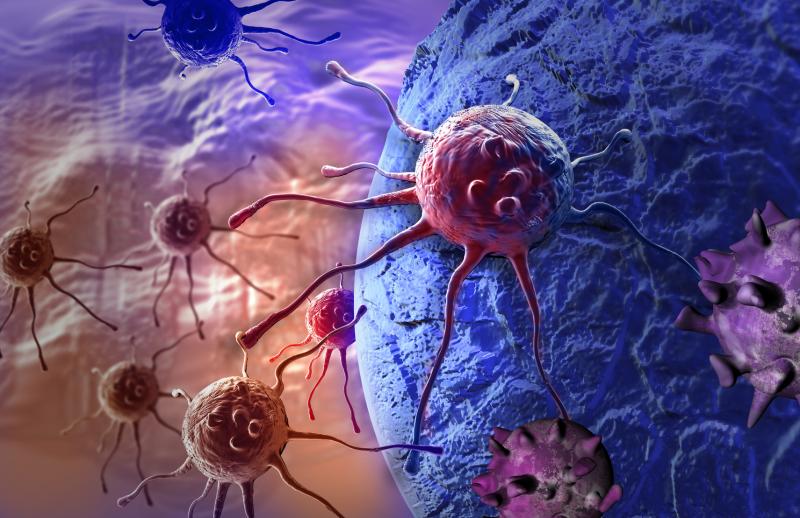 Trojan Horse for cancer cells
Trojan Horse for cancer cellsRisk stratification and risk-guided therapy improves event-free survival (EFS) in children with acute lymphoblastic leukaemia (ALL), a recent study has found.
The study included 1,138 children with non-T-cell ALL who were stratified into three groups according to age, white blood cell count, genetic profile and treatment response: standard risk (SR; n=456), high risk (HR; n=543) and extremely high risk (ER; n=139). Study outcomes included 4-year EFS and overall survival (OS).
Almost all the participants achieved complete remission (96.4 percent); only 38 failed to reach remission, of whom two died of leukaemia-related complications. Two patients developed secondary neoplasms after allogeneic haematopoietic cell transplantation (HCT), though both were still alive at last follow-up.
The 4-year EFS and OS rates were 85.4 percent and 91.2 percent, respectively. In the intention-to-treat analysis, the risk-stratified EFS rates were 90.3 percent in SR, 84.9 percent in HR and 66.5 percent in ER. The 4-year cumulative incidences of relapse in the respective risk groups were 8.7±1.4 percent, 13.4±1.7 percent and 30.4±5.3 percent.
Risk-adjusted therapy also appeared to improve treatment outcomes, leading to a 4-year EFS rate of 90.4±1.4 percent in the SR group. In comparison, the respective rates for HR and ER patients were 84.9±1.6 percent and 66.5±4.0 percent.
“In summary, refined stratification and risk-adjusted therapy in [this population] resulted in improved EFS of SR patients. New therapeutic strategies, including molecular targeting agents, immunotherapy, and innovative cell therapy are needed to improve the outcome of HR patients,” said researchers.